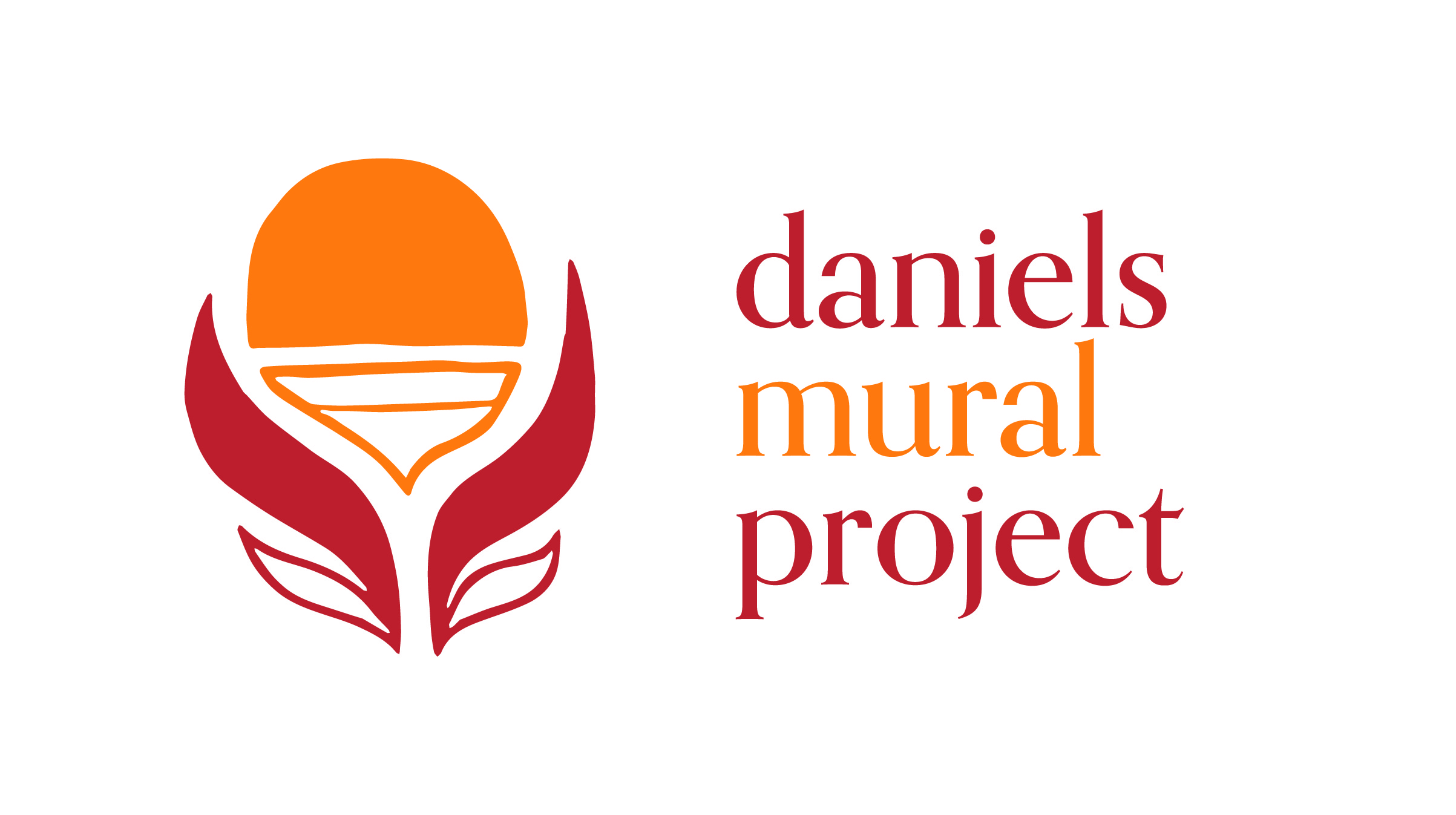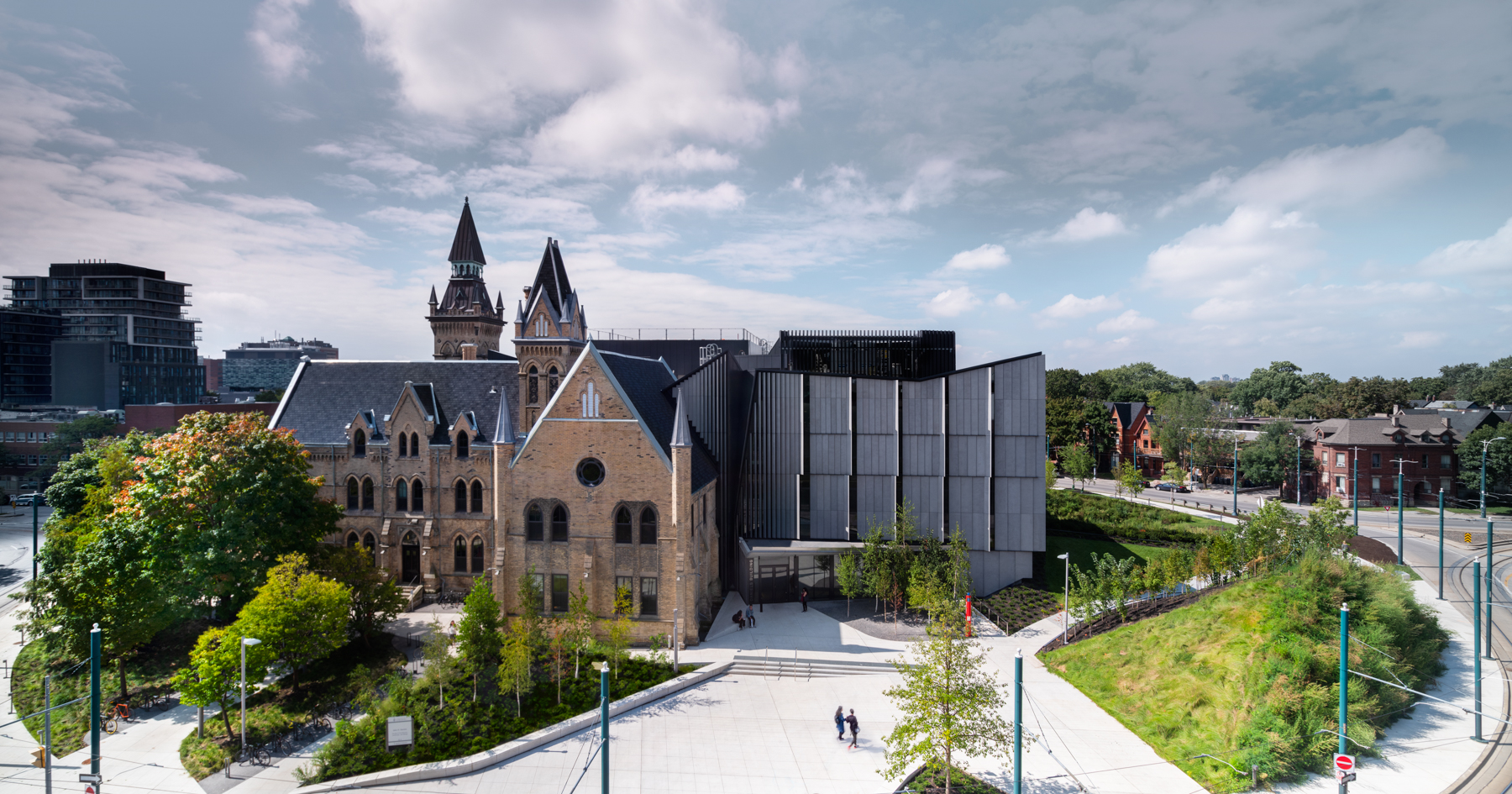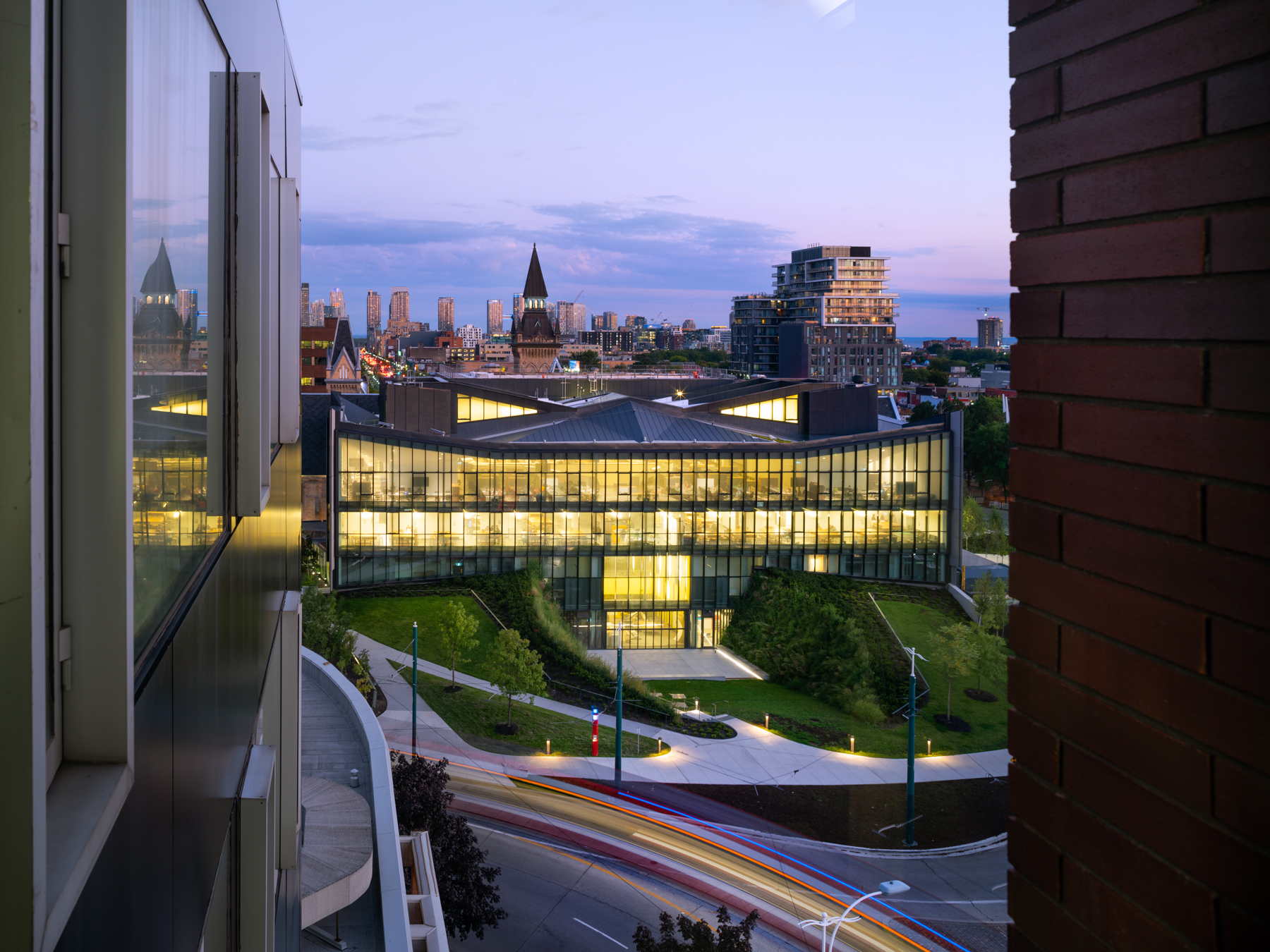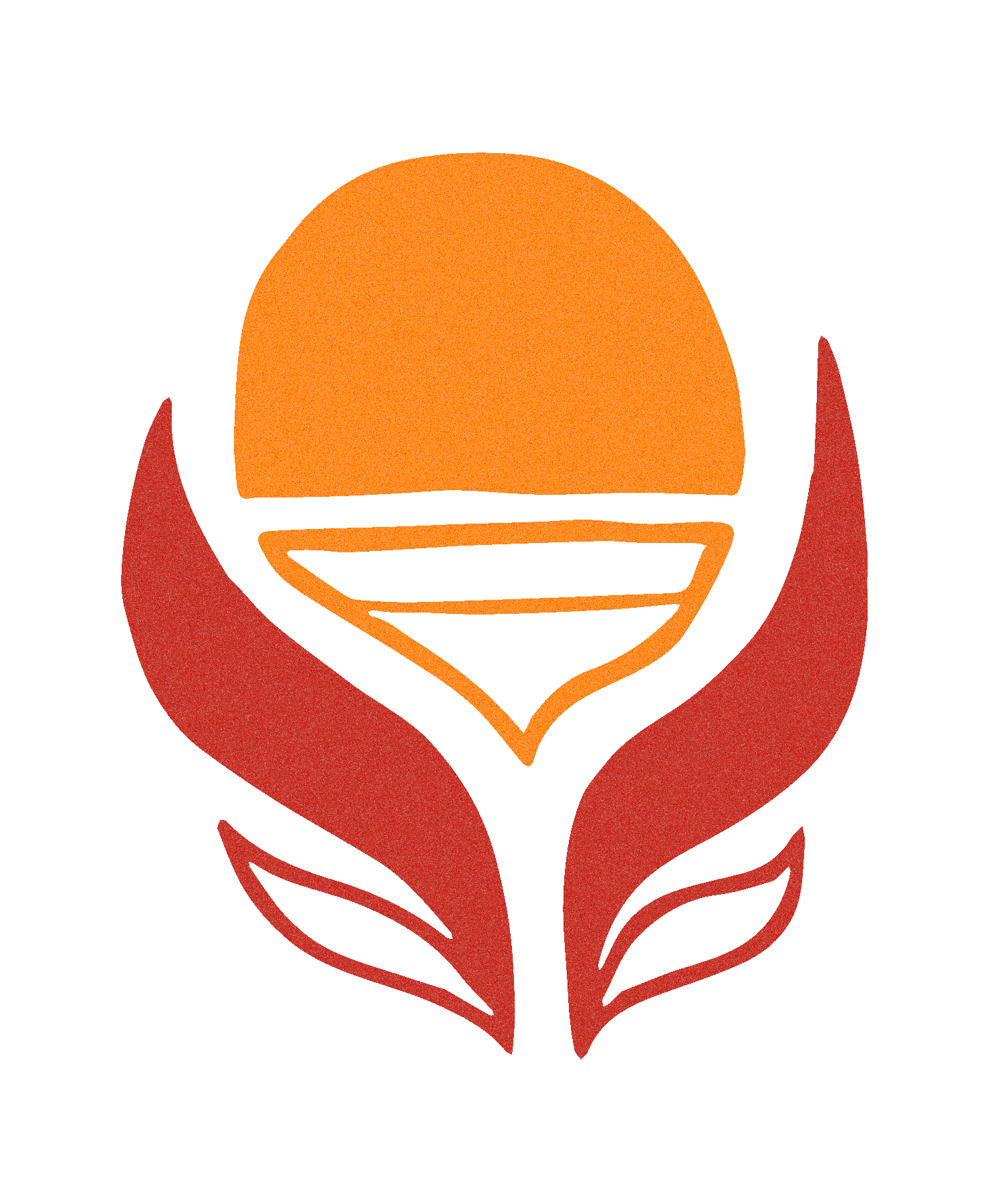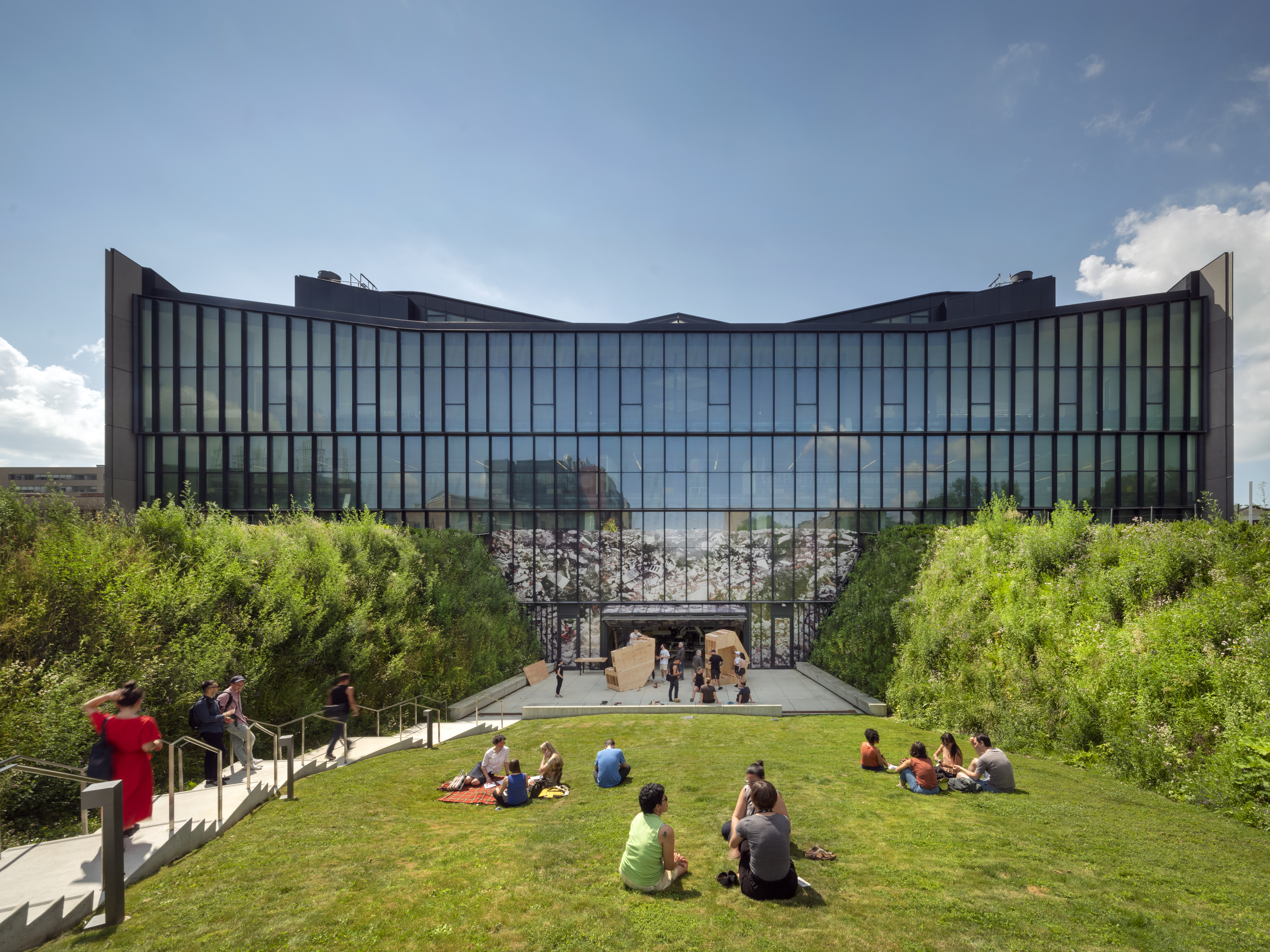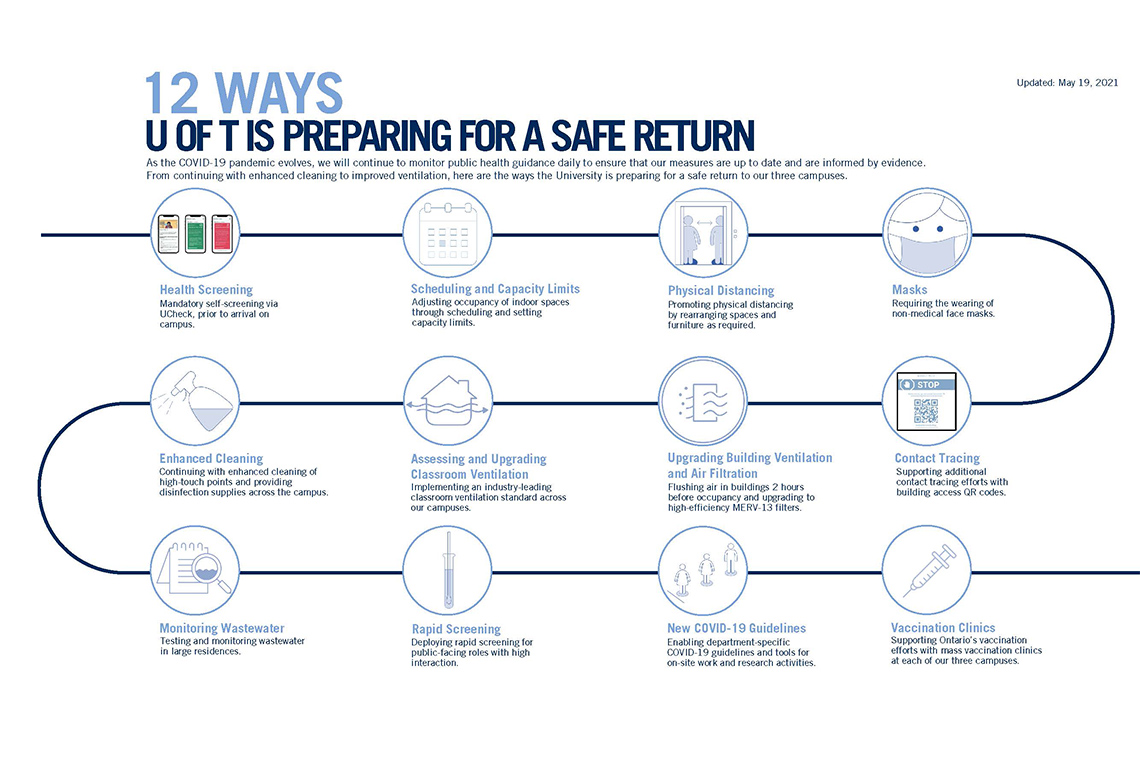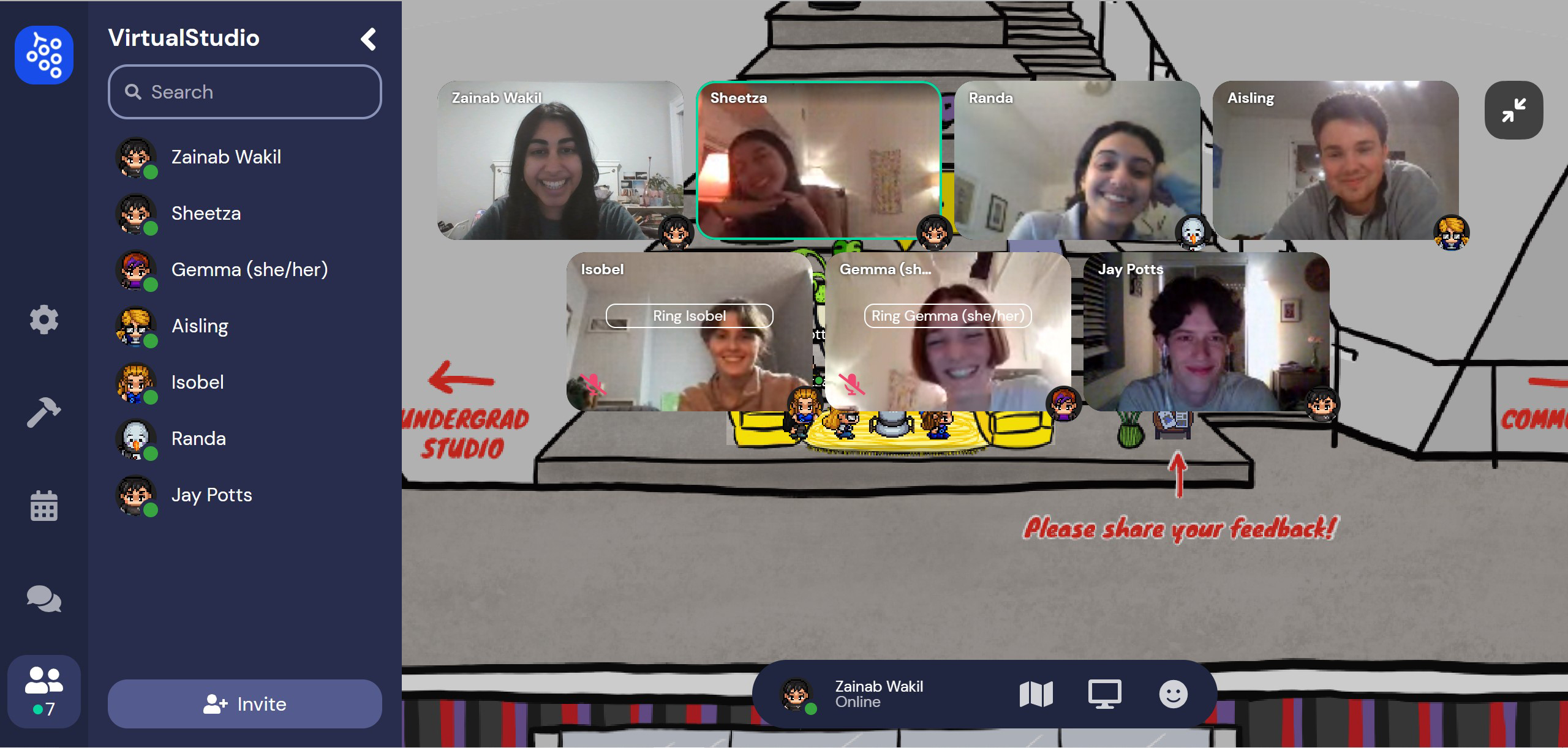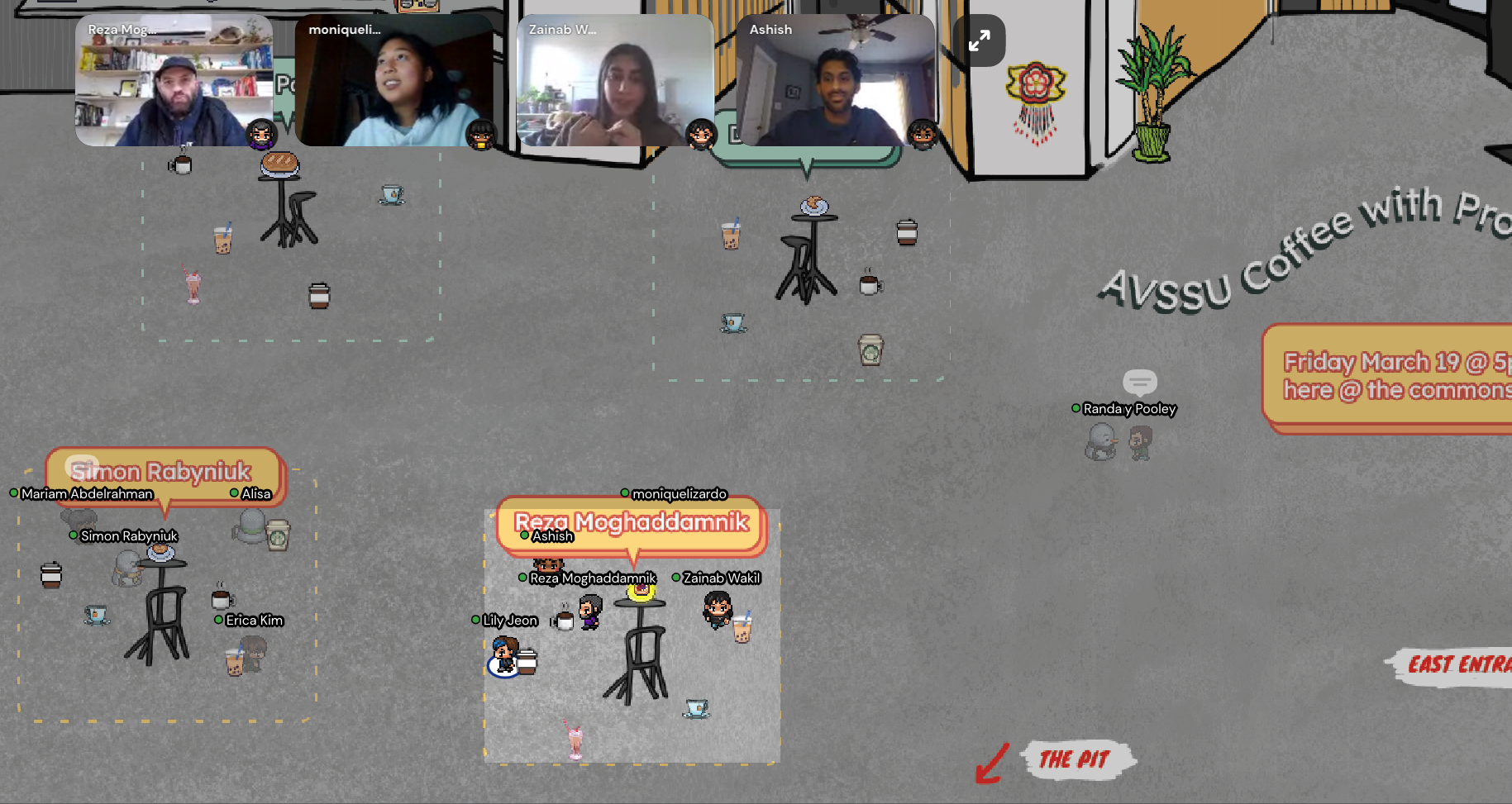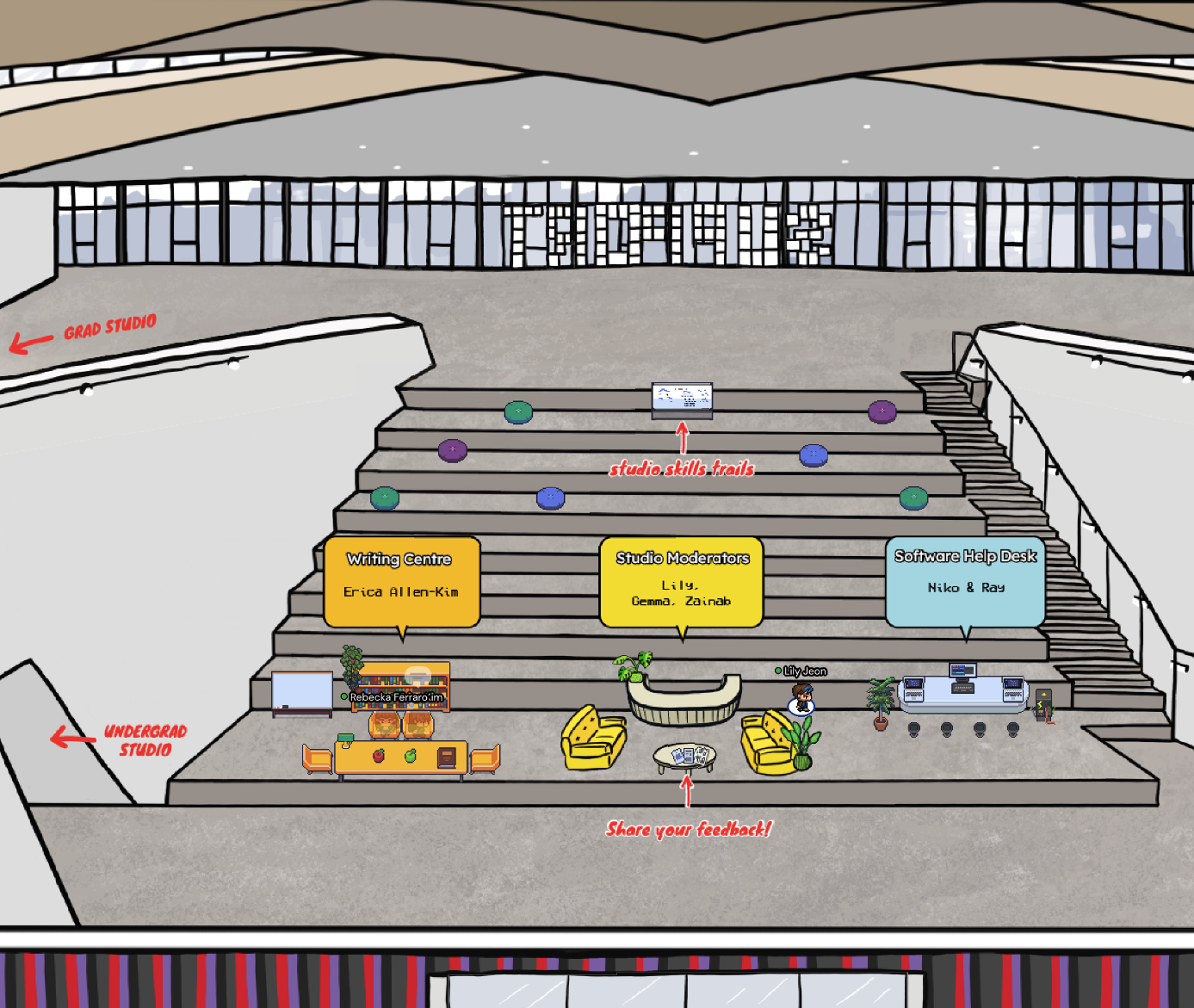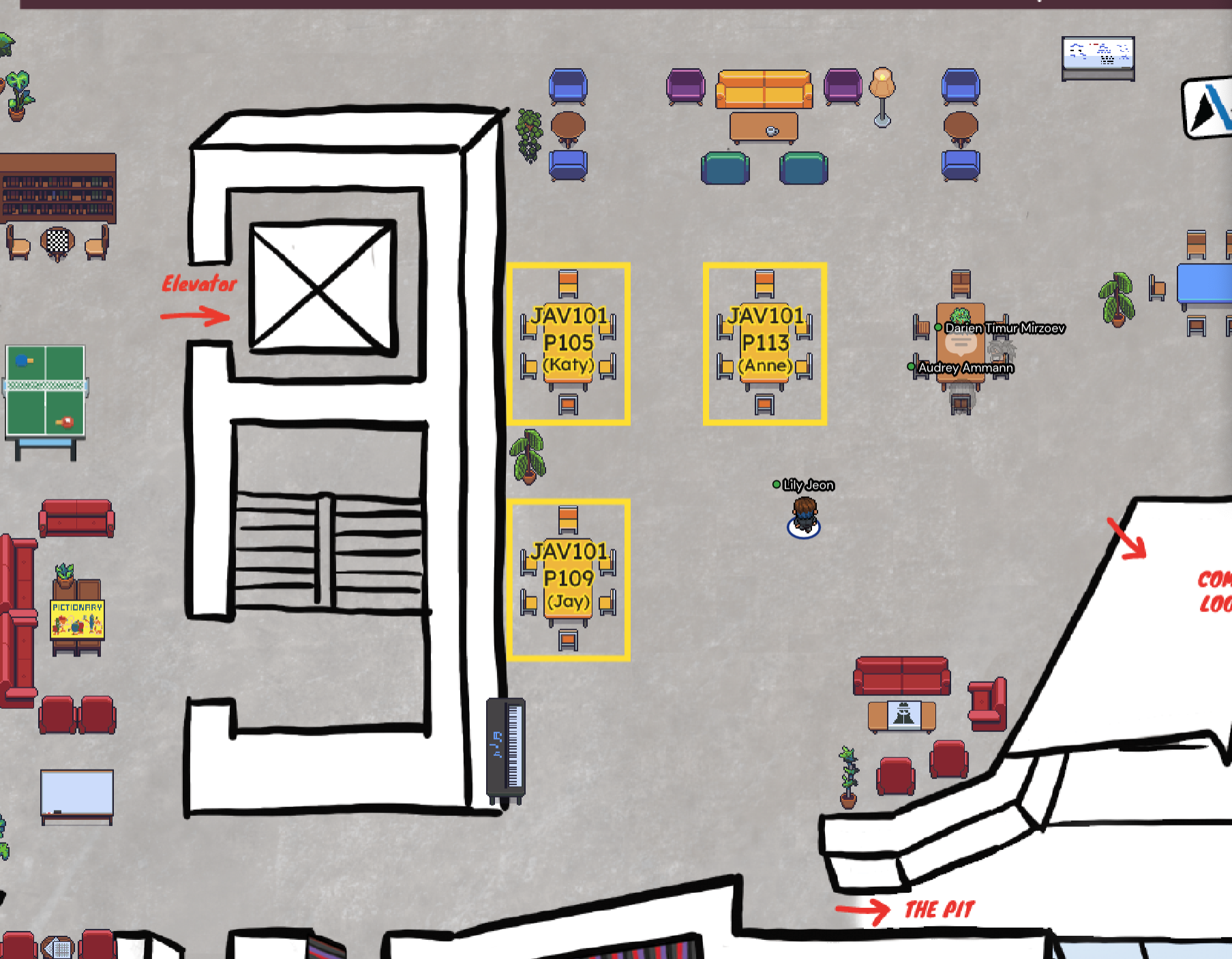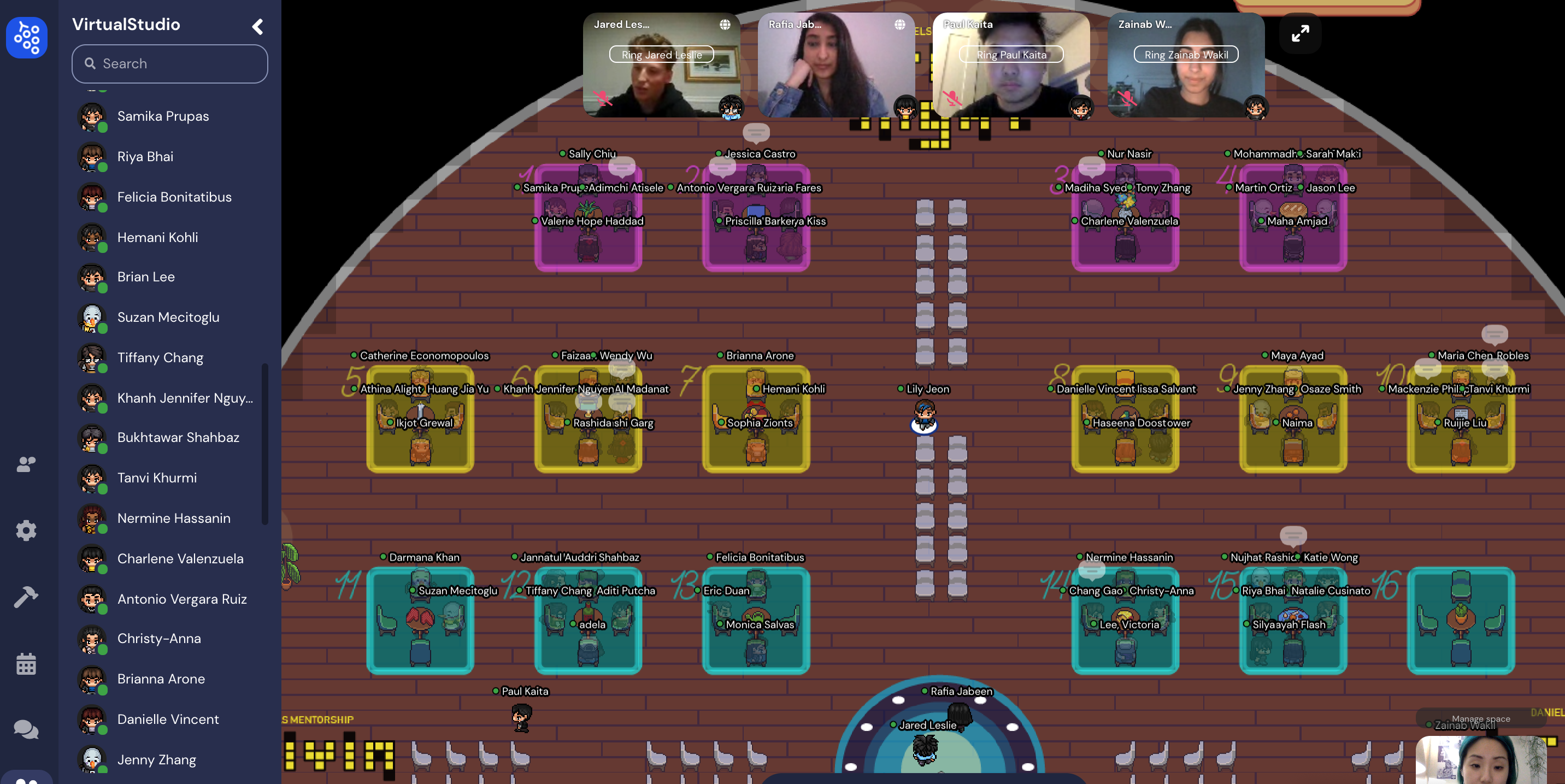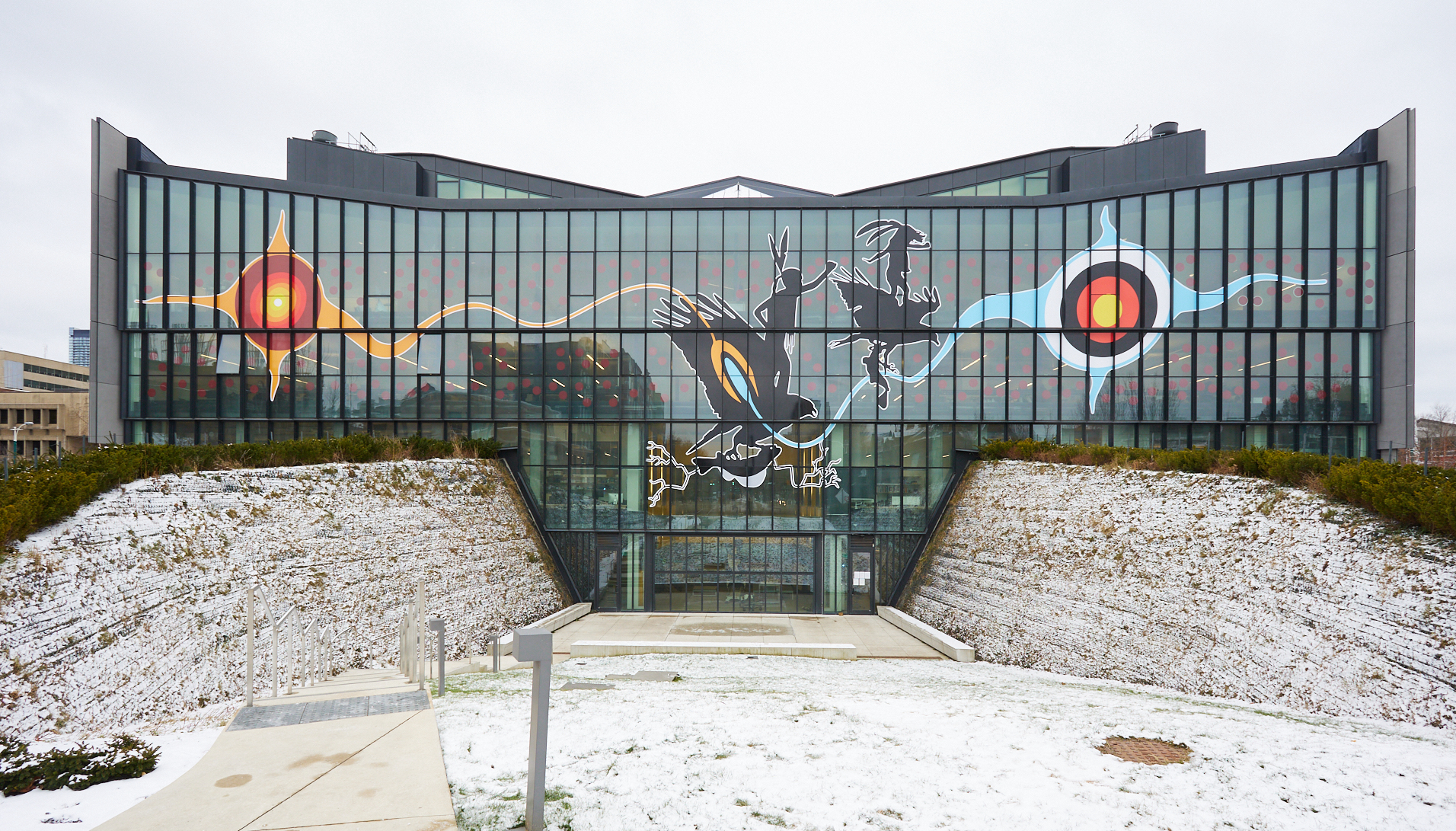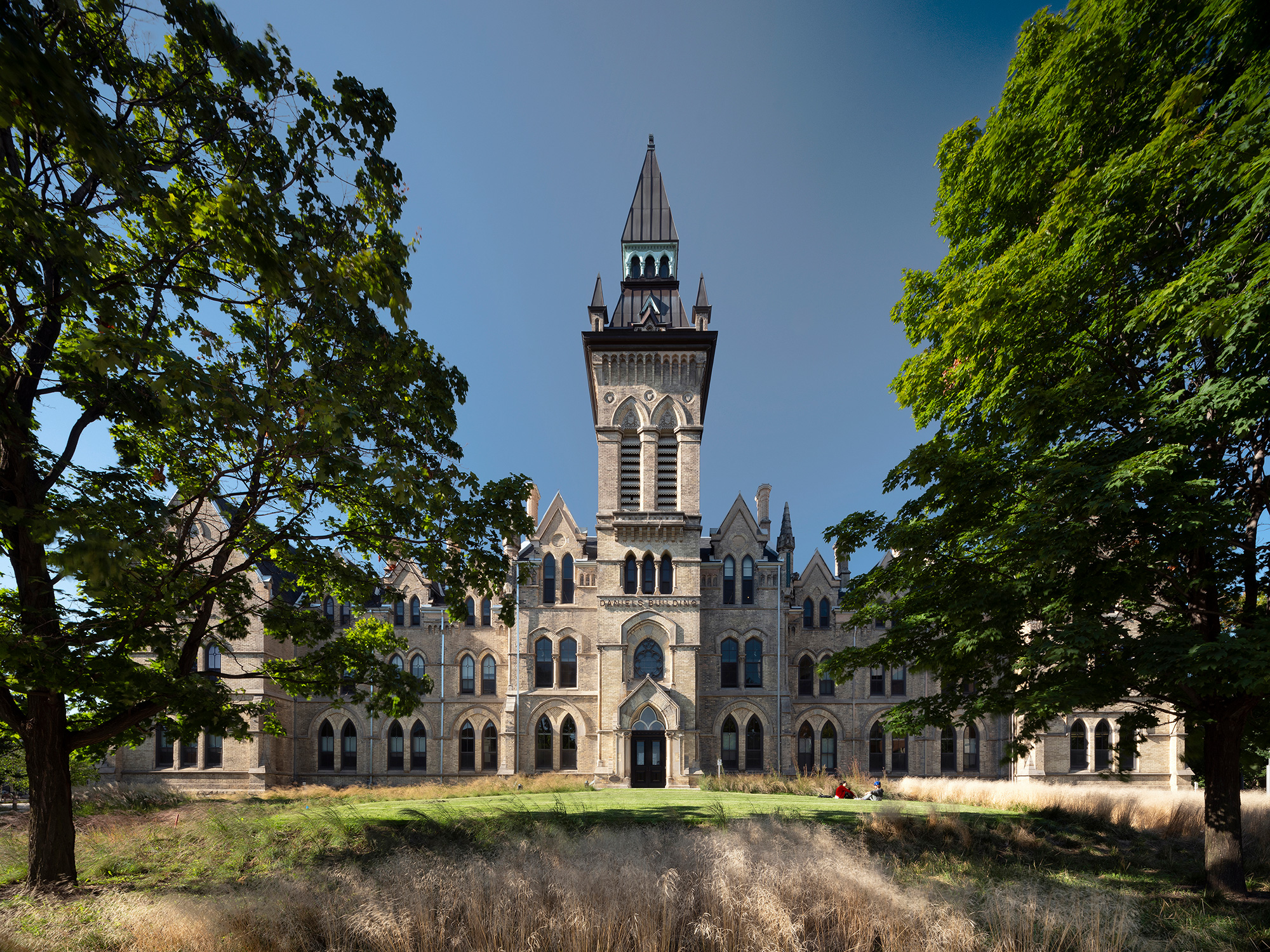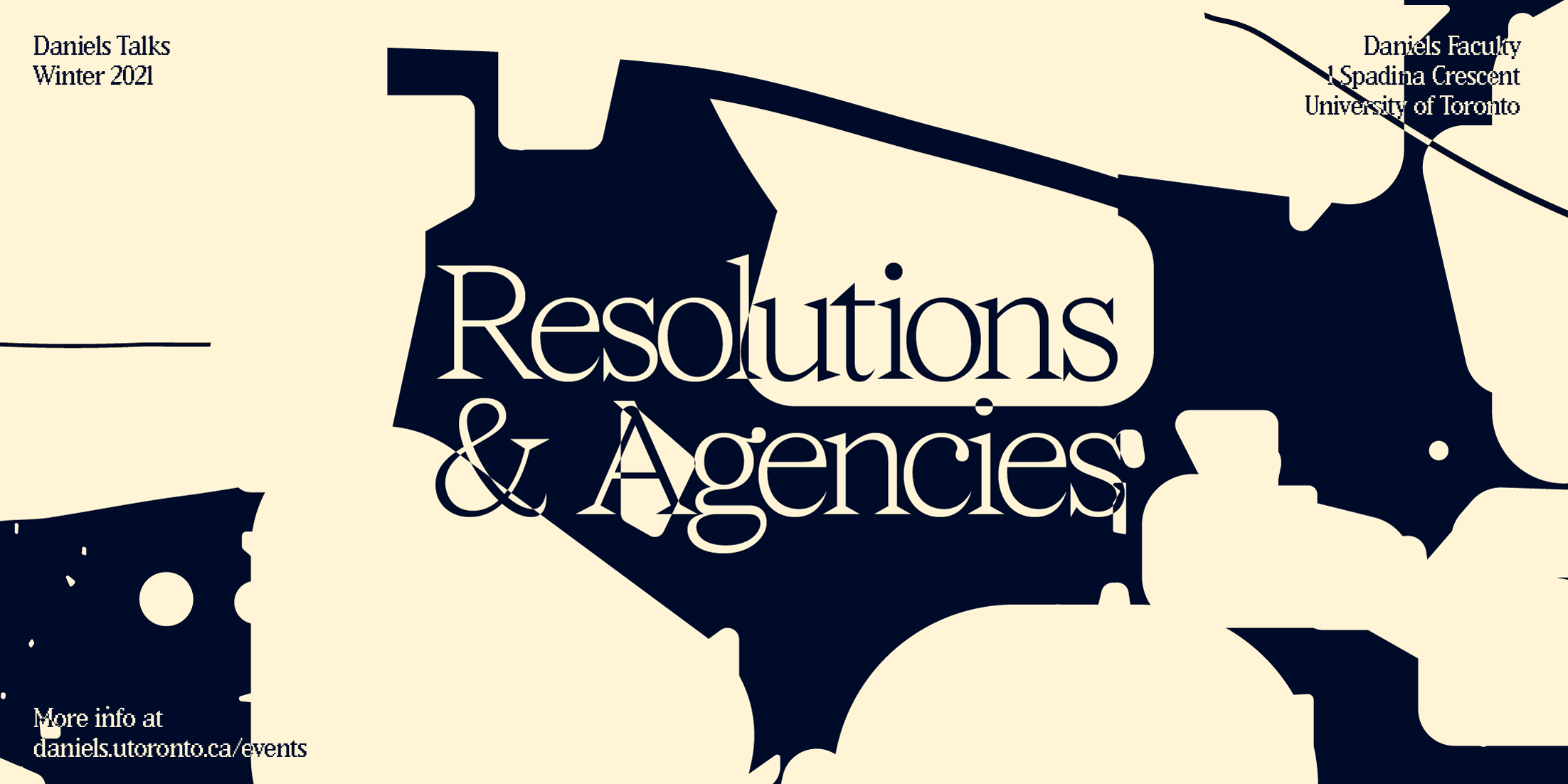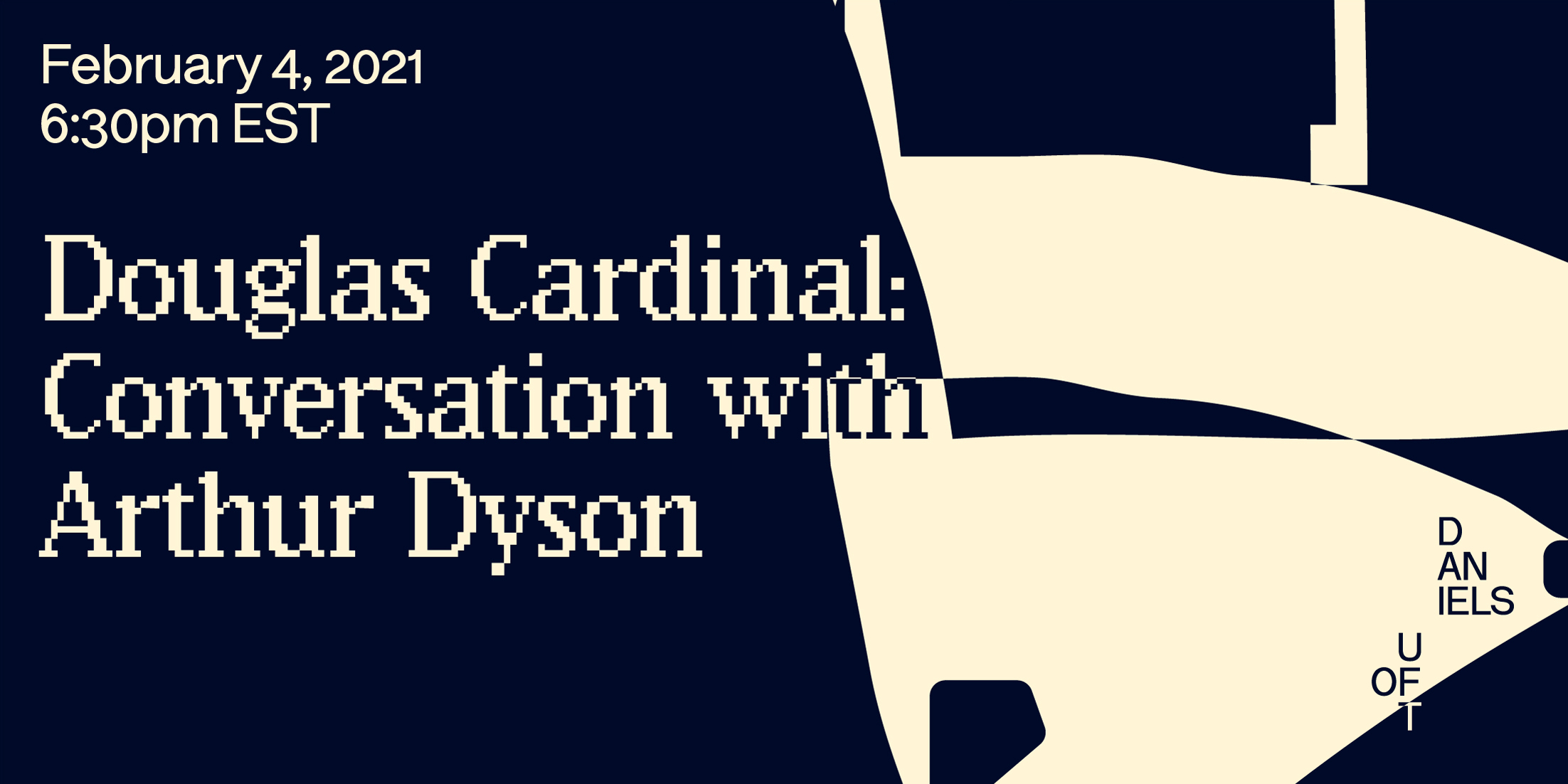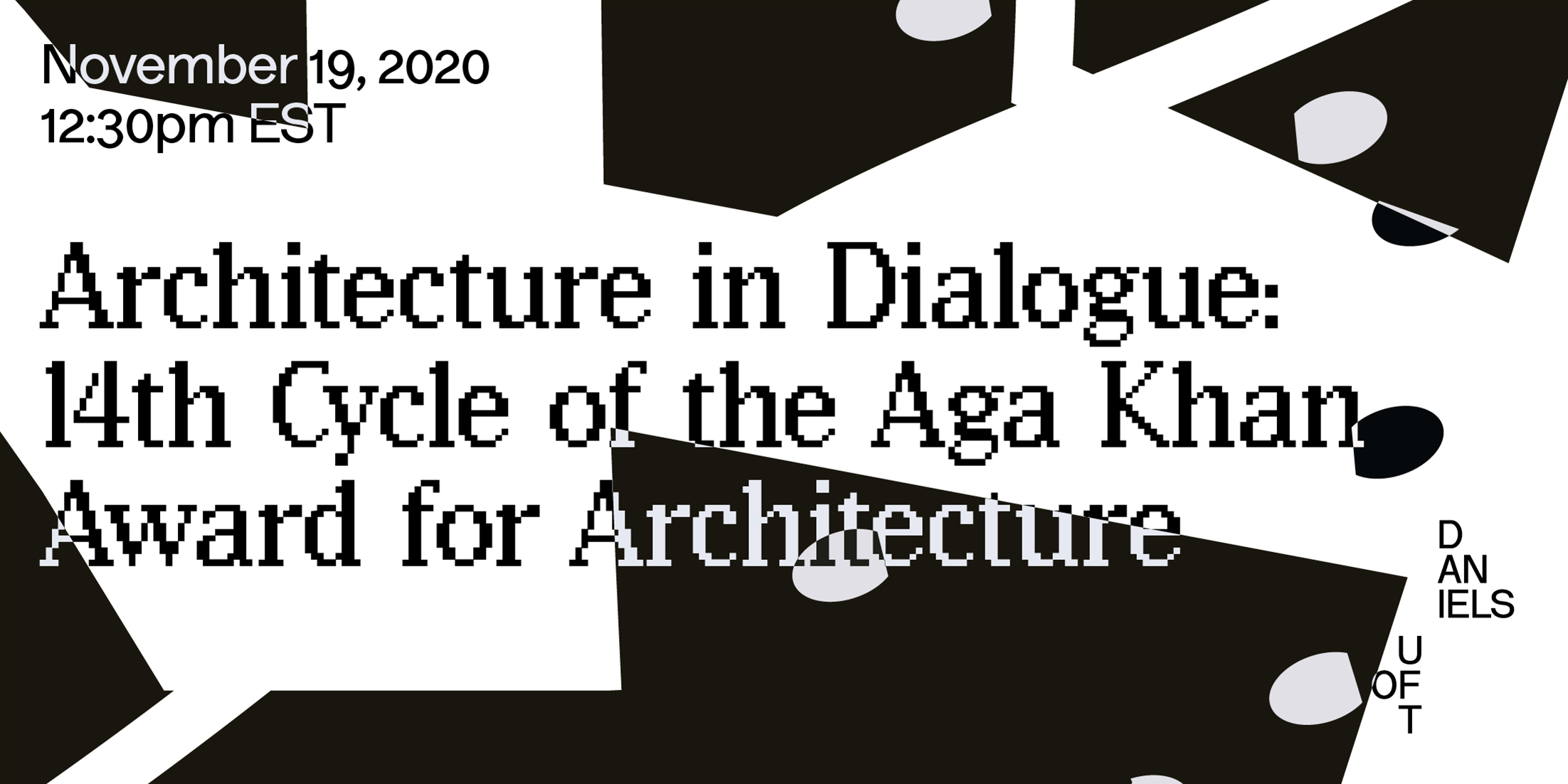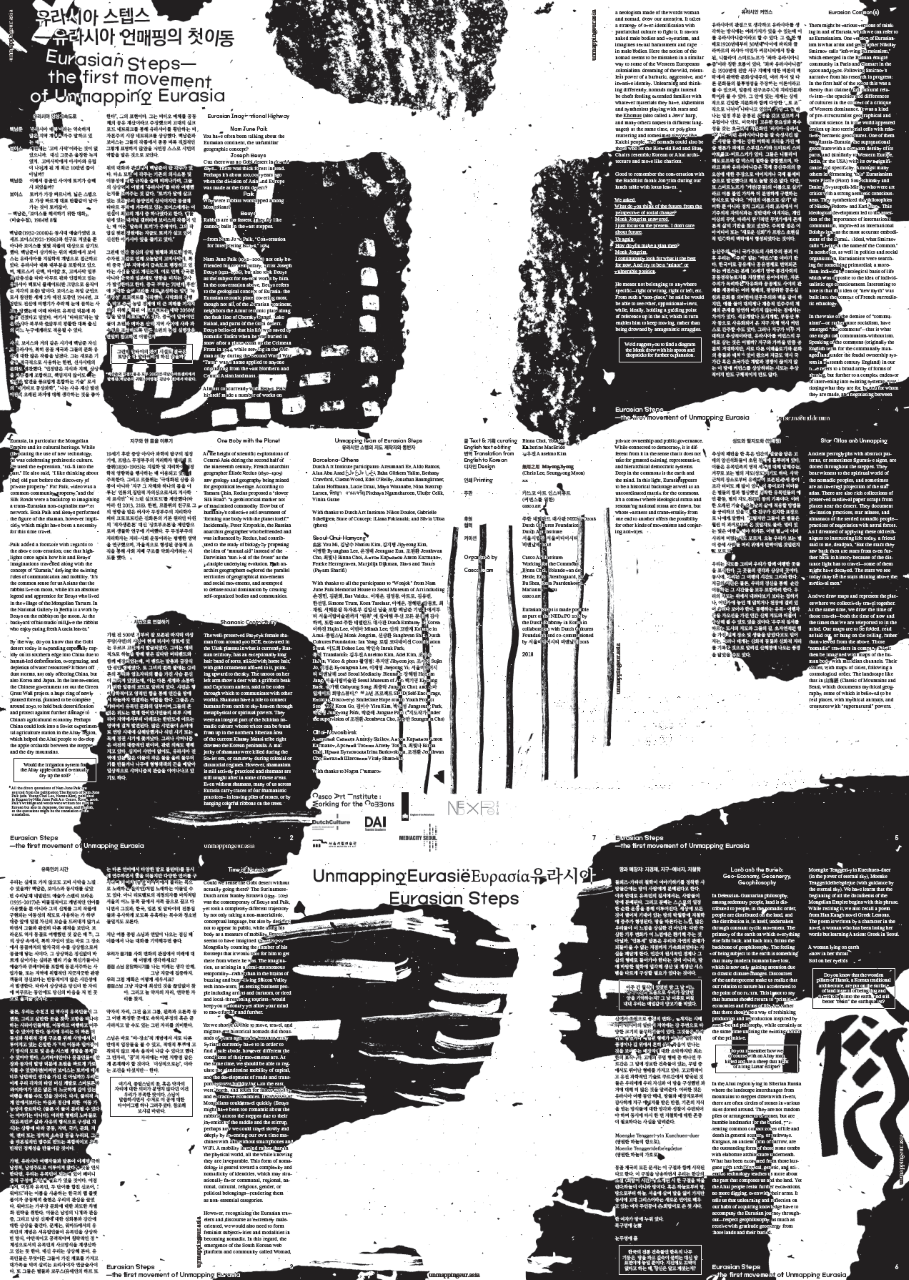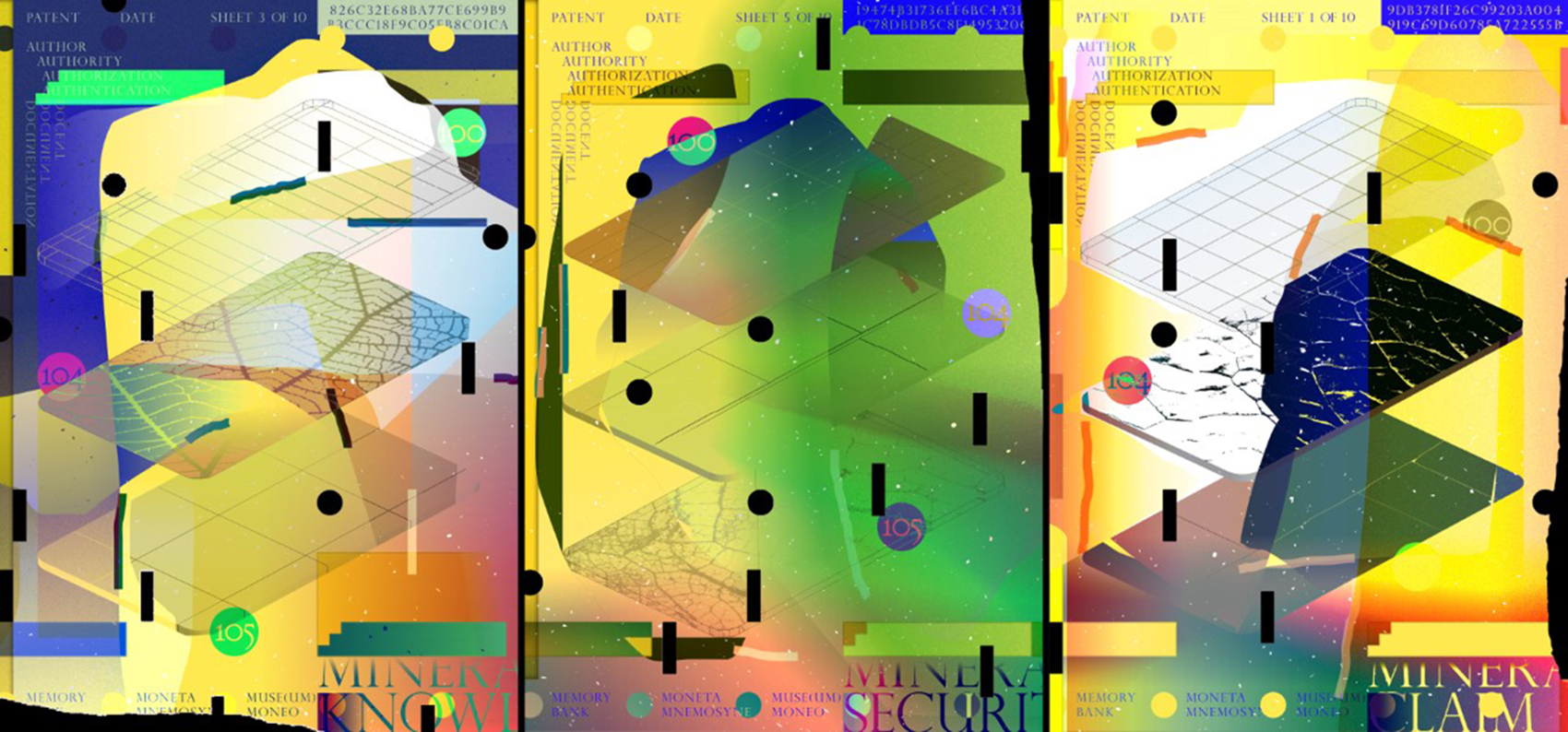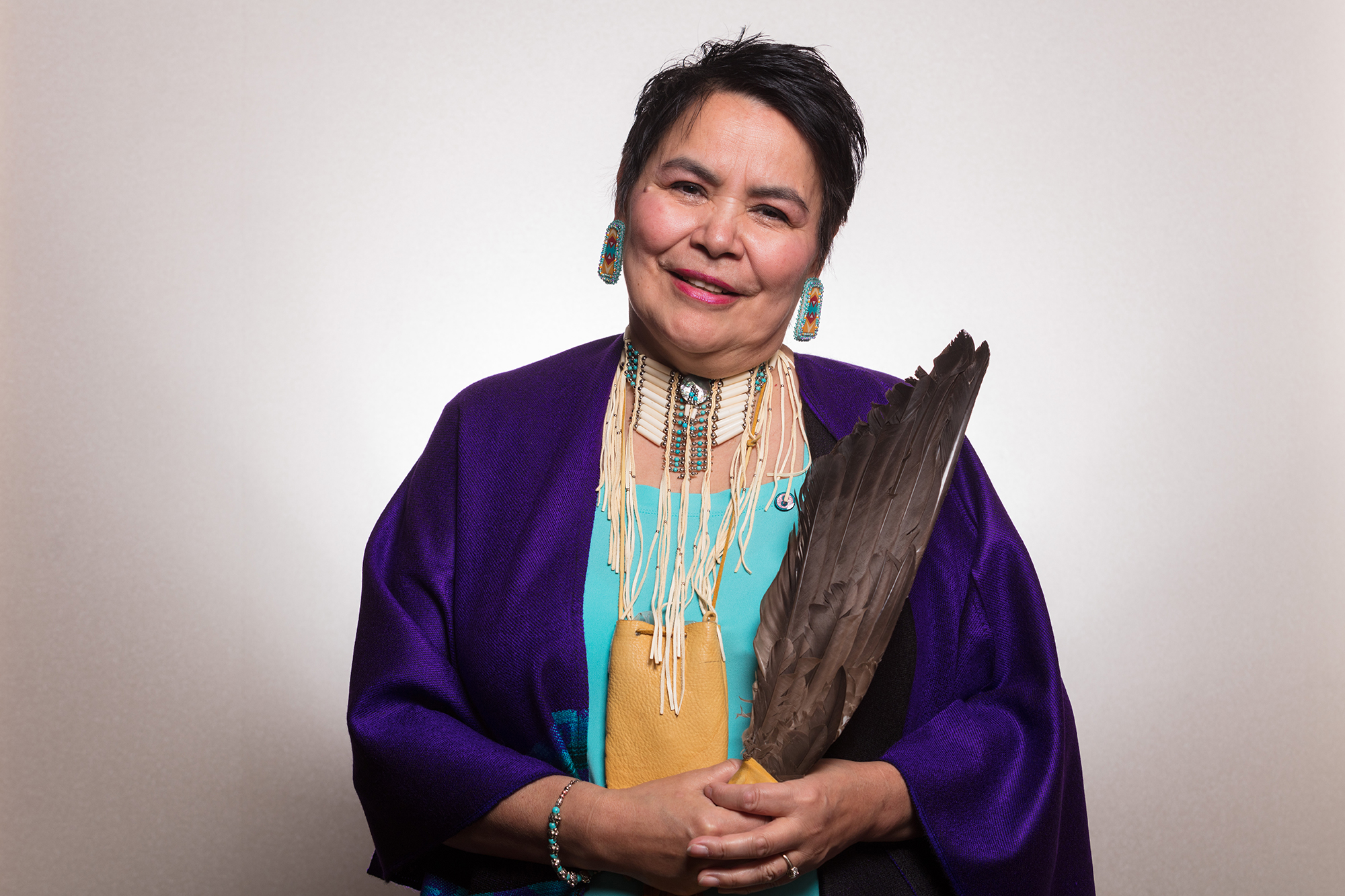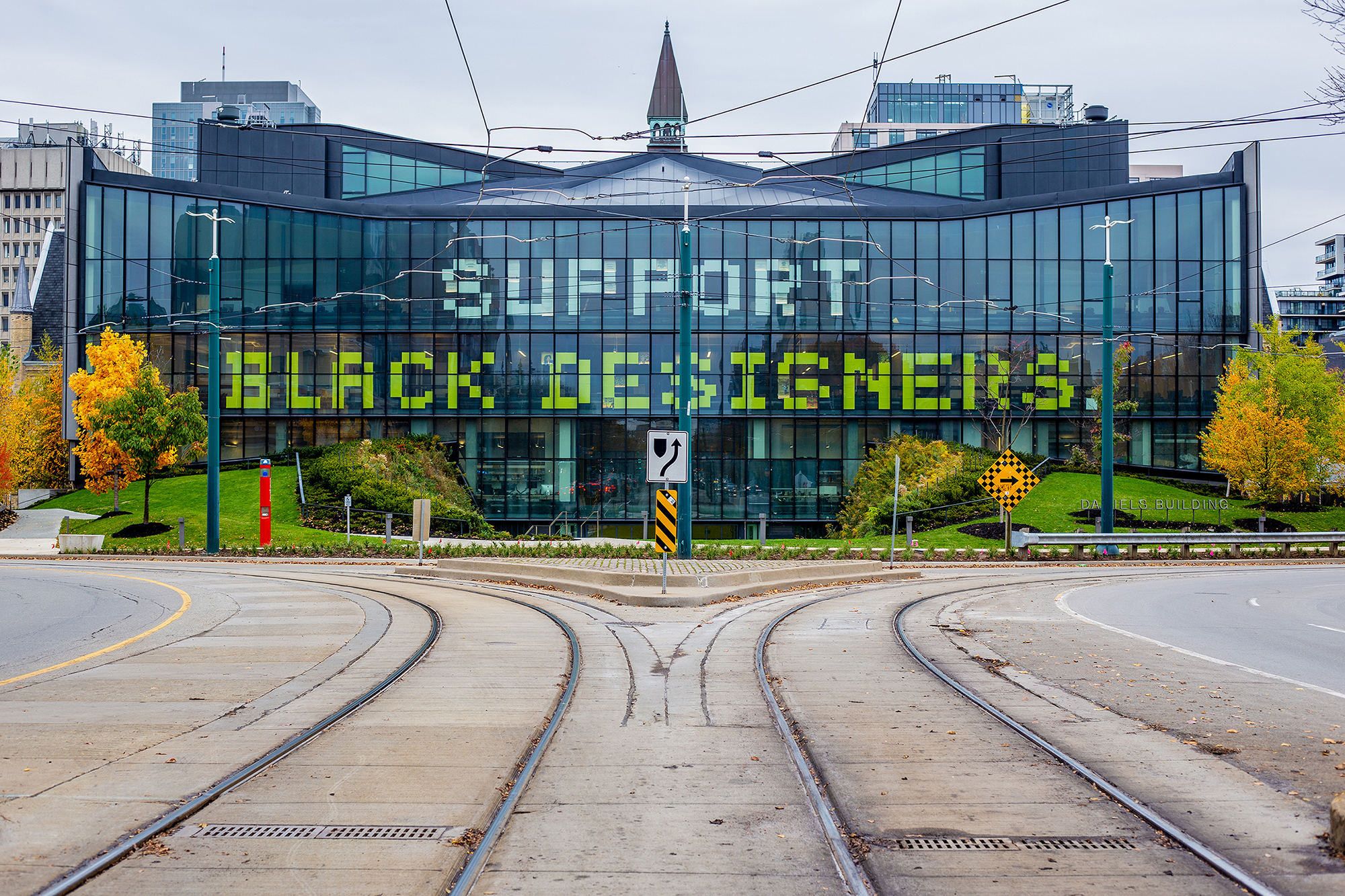The Daniels Building is now a canvas for a giant-sized mural that serves as a call to action for dismantling systemic racism in the discipline of design.
The temporary installation, which spells out the words "Support Black Designers" in large letters, now occupies the wall of windows on the building's north facade. The words are visible to anyone travelling south of Willcocks Street on Spadina Avenue, one of downtown Toronto's busiest traffic arteries.
The mural project was a community effort by the Daniels Art Directive, a student-run art group. The design is the work of two Daniels Faculty alumni, Ashita Parekh and Tolu Alabi.
Each letter is made up of "pixels" — individual poster-sized pages, some of which are decorated with artwork submitted by designers in response to a call for pixel designs over the summer. The mural's creators received 84 pixel submissions, but decided to include only the ones that were created by Black designers — which turned out to be about 20 per cent of the total.
"The original call was open to everyone," Parekh says. "But after consultation with faculty members and students at Daniels who are Black, we realized that it was not right to give this platform to people who were non-Black. The Black creatives could not be a minority."
The mural is intended as a call to improve diversity and inclusivity in the design disciplines, where Black creatives have historically been underrepresented. "There need to be opportunities for students and designers to understand the benefits that Black people have provided within the design industry," Alabi says. "And for them to understand that Black people have always been essential to the design industry."
The Daniels Faculty has committed to creating a culture of inclusion. "It is important to understand how vital the input and work of our students has been in helping us understand issues around systemic racism in our institutions and professions," says interim dean Robert Wright. "We are learning every day from students, designers, and artists who are educating and transforming this faculty. The 'Support Black Designers' mural is a great demonstration of how the Daniels Faculty can do better."
"These words have power, but they must be followed by action," Wright adds. "I'm glad to share that we are now in the final stages of hiring our first-ever director of equity, diversity, and inclusion. This position will have a mandate to advance our equity goals. In addition to that, we're continuing to work with faculty, staff, and students on efforts to decolonize our curriculum."
“We are honoured to support this message, and the Black creatives who contributed,” says Michelle Ng, a founder of the Daniels Art Directive. “We were pleased when Tolu and Ashita’s design won the community vote, as it is crucial that we — as students and members of society — listen to and amplify Black voices in design. Through community consultation on this project, we learned and unlearned our own biases. While this mural is temporary, we hope to continue creating, sharing and supporting more platforms for Black voices in order to inspire change in design.”
To view the mural in person, visit the north side of Spadina Crescent. The best viewing angle is directly behind the Daniels Building, on the sidewalk. (Visitors are advised not to stand in the street.)
The mural was created with the assistance of lead sponsor Vistaprint.
For more information on the mural project, or for a closer look at the pixel art, visit the Support Black Designers website.
Photograph by Guershom Kitsa.
